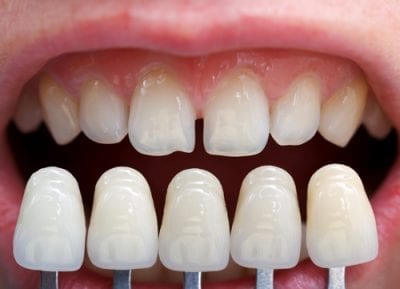Just as there’s more than one way to skin a cat, there’s also more than one way to restore your teeth with dental inlays and onlays. These dental restoration techniques are used to fix teeth that have suffered from moderate to mild decay as well as fractures or cracks. However, the extent of the damage shouldn’t be so severe that you’ll need a new crown and whatnot.
However, it should be severe enough that a simple filling won’t suffice to fix the potholes on your tooth or teeth. Inlay or onlay work typically has ideal candidates that have sufficient healthy tooth structure remaining to forgo crown usage. The idea here is to conserve more of the patient’s original tooth rather than replacing everything by a crown. These inlays or onlays are typically composed of porcelain that closely matches the normal color of your teeth.
How Are Inlays and Onlays Done?
You’ll need two appointments in order for your inlay and only treatment to be considered completed to the point that the damaged area of the tooth has undergone full bonding. Both inlay and onlay procedures are performed with similar steps, actually.
- First Appointment: The dentist first numbs the area where the tooth will be treated using a local anesthetic. Any damage or decay is removed by drilling. This is to prep and clean out the tooth for the dental inlay or onlay procedure. From there, a small tray filled with dental putty that fits over the teeth is brought out. The dentist will use this to make a mold or impression of the damaged teeth.
This mold is then sent to a dental lab. This is where the dental inlay or onlay is made to fit the damage portions of your tooth in an exact manner. They can also be made of gold or composite resin depending on your budget. While the inlay or onlay is being made in the laboratory, the dentist creates a temporary cover for your tooth to protect it until your next appointment.
- Second Appointment: As for the second appointment, this is the part where the temporary cover is removed and the inlay or onlay fitment is tested to ensure size compatibility when all is said and done. If the fitting is less than perfect, a bit of smoothening and adjustment might have to take place.
Only when the dental apparatus is deemed a perfect fit will the dentist finally bond the inlay or onlay onto the damaged tooth with a particularly strong resin adhesive. Afterwards, the treatment is finished with polishing to ensure a finish that’s aesthetically pleasing to the eye and smooth to the touch.
Expectations and Realities
Every visit to your dentist for this treatment takes about an hour. The first appointment takes slightly longer than the second appointment because it’s the preparation process and whatnot. The patient will also have to brace himself for a bit of discomfort after the procedure is completed.
The tooth surface will feel weird, but eventually you’ll get used to it mostly because of human adaptability. It’s the same as the odd initial feeling you get when you extract a tooth and there’s now a missing tooth on your now empty tooth socket filled with smoothened gums.
For example, the tissue around the tooth might feel sensitive and sore, but this should only last for a few days. It can also be taken care of with pain medication that’s OTC (over the counter) that should assist in alleviating your symptoms. If symptoms persist, consult your dentist.
Thantakit International Dental Center is Thailand’s longest established dental center. Situated in Bangkok, our clinic is renowned across the world as a destination for world-class dentistry, with most of our patients flying to us from Australia.
Please contact us today and get a FREE dental consultation.












